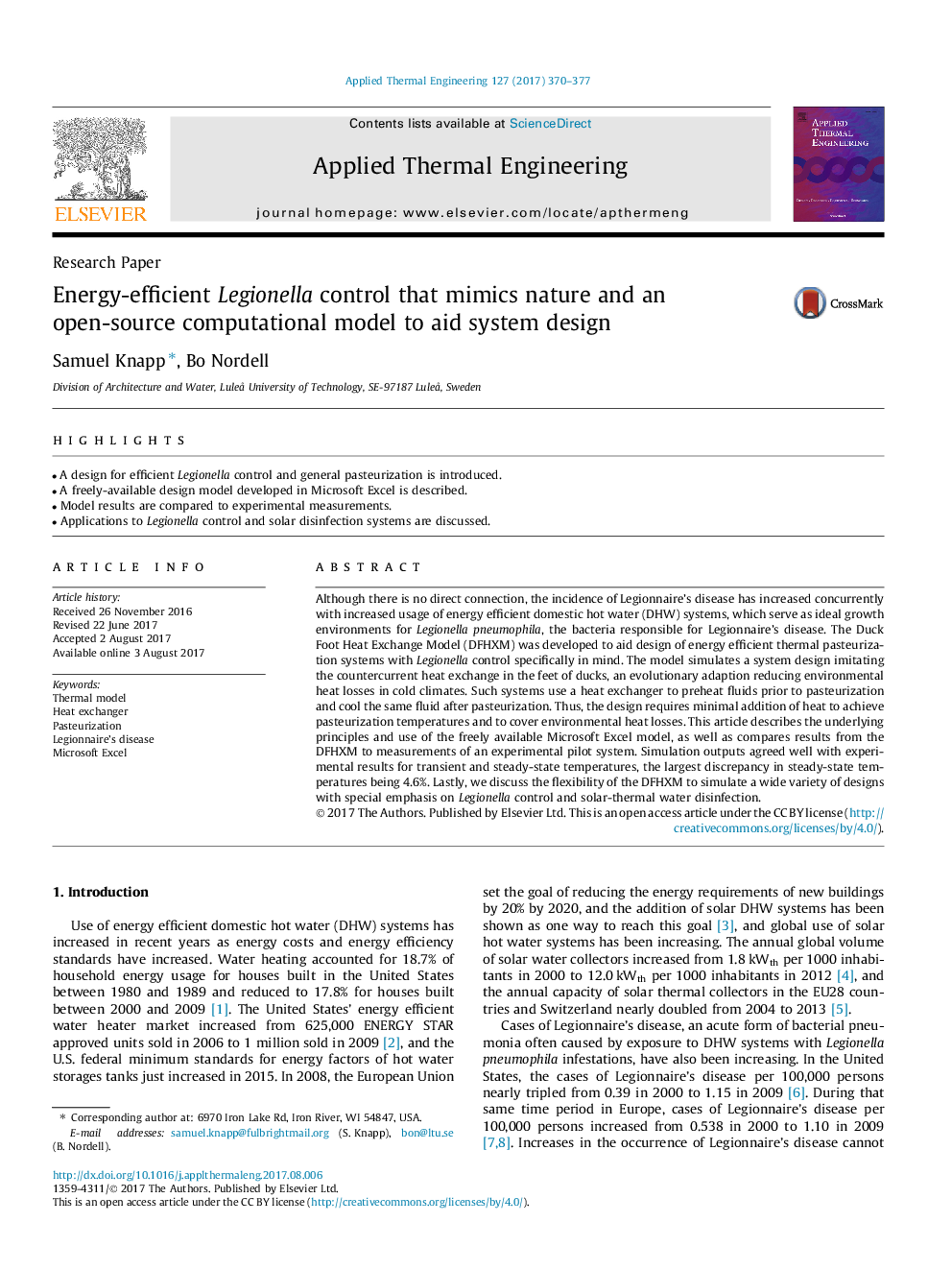| Article ID | Journal | Published Year | Pages | File Type |
|---|---|---|---|---|
| 4990726 | Applied Thermal Engineering | 2017 | 8 Pages |
Abstract
Although there is no direct connection, the incidence of Legionnaire's disease has increased concurrently with increased usage of energy efficient domestic hot water (DHW) systems, which serve as ideal growth environments for Legionella pneumophila, the bacteria responsible for Legionnaire's disease. The Duck Foot Heat Exchange Model (DFHXM) was developed to aid design of energy efficient thermal pasteurization systems with Legionella control specifically in mind. The model simulates a system design imitating the countercurrent heat exchange in the feet of ducks, an evolutionary adaption reducing environmental heat losses in cold climates. Such systems use a heat exchanger to preheat fluids prior to pasteurization and cool the same fluid after pasteurization. Thus, the design requires minimal addition of heat to achieve pasteurization temperatures and to cover environmental heat losses. This article describes the underlying principles and use of the freely available Microsoft Excel model, as well as compares results from the DFHXM to measurements of an experimental pilot system. Simulation outputs agreed well with experimental results for transient and steady-state temperatures, the largest discrepancy in steady-state temperatures being 4.6%. Lastly, we discuss the flexibility of the DFHXM to simulate a wide variety of designs with special emphasis on Legionella control and solar-thermal water disinfection.
Related Topics
Physical Sciences and Engineering
Chemical Engineering
Fluid Flow and Transfer Processes
Authors
Samuel Knapp, Bo Nordell,
